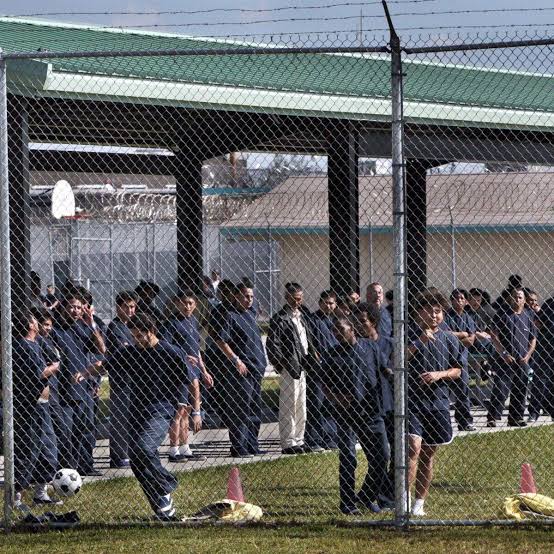ICE Detainee Found Dead in Cell: Investigators Speak Out

At least one victim is dead and was injured in a shooting in two Dallas in an American immigration and customs enforcement facility. Today we will discuss about ICE Detainee Found Dead in Cell: Investigators Speak Outp
ICE Detainee Found Dead in Cell: Investigators Speak Out
On a quiet Thursday morning in East Meadow, Nassau County, New York, correctional officers discovered an unresponsive ICE detainee in his cell. The man was pronounced dead on the scene. This tragic incident has triggered investigations at multiple levels—local, state, and federal—and is drawing renewed scrutiny over medical care, detention conditions, and accountability within the U.S. Immigration and Customs Enforcement (ICE) detention system.
This article explores what is known so far, the major investigative developments, historical context, legal and human rights implications, reactions from affected communities, and what this case could mean for the future of immigration detention in America.
What Happened: Factual Account & Timeline

Discovery and Initial Response
-
Early on September 18, 2025, correctional staff at the Nassau County Jail in East Meadow reported that a 42-year-old ICE detainee was found “unresponsive” in his cell.
-
A medic was called, but the detainee was pronounced dead at the scene.
-
Officials did not immediately release the name of the deceased.
-
The State Attorney General’s office and the county’s homicide squad opened investigations.
-
Under the current ICE–county agreement, Nassau County houses ICE detainees (for up to 72 hours) in the East Meadow facility in exchange for federal reimbursement.
Identity and Family Statements
-
Local press later identified the man as Santos Banegas Reyes, reportedly a Honduran national.
-
According to his sister, Reyes had no known serious medical ailments and had been employed as a construction worker.
-
She expressed confusion and anguish: “We are very confused by his death … We want to know the truth of what happened—why did he die in their hands? We want the answer.”
-
Nassau County Executive Bruce Blakeman suggested preliminary reports indicated Reyes had a “serious, latent medical condition,” but emphasized investigations must conclude first.
Context & Facilities
-
This is the first reported death of an ICE detainee in the Nassau County jail facility since it began holding detainees under an ICE partnership.
-
Over 1,400 immigration detainees have been held at the facility under this agreement since February 2025.
-
The county is reimbursed USD 195 per detainee per night by the federal government.
Investigations Underway: Authorities Speak Out
Local & State Inquiries
-
Nassau County’s homicide unit is leading the on-site investigation, which includes interviewing staff, reviewing surveillance footage, and conducting autopsy and forensic toxicology tests.
-
The New York State Attorney General’s office is conducting a preliminary assessment to determine whether state law or standards were violated, and if county personnel acted properly.
-
Sheriff Anthony LaRocco stated that the investigation aims to be “thorough and transparent.”
Federal Oversight & ICE Response
-
ICE has not publicly confirmed any specific findings in this case yet. The agency typically issues a detainee death report within 30 days and a full report (including redactions) within 60 days by law.
-
ICE maintains that individuals in its custody receive medical, dental, and mental health screening within 12 hours of arrival, a full health assessment within 14 days, and access to emergency care 24/7.
-
Historically, ICE’s internal investigations have been criticized by oversight bodies for lacking transparency or accountability.
Historical and Systemic Patterns in ICE Detainee Deaths
Trends & Numbers
-
The American Immigration Lawyers Association (AILA) catalogs known deaths in adult immigration detention and notes that in-custody deaths have occurred regularly, even though immigration detention is supposed to be civil (not punitive) in nature.
-
In fiscal year 2025 (which began October 2024), several detainee deaths already occurred, including a Chinese national found hanging in a Pennsylvania facility.
-
Between 2017 and 2021, a joint report by the ACLU, Physicians for Human Rights, and American Oversight examined 52 ICE detainee deaths and identified many as preventable, citing delayed medical care, negligence, and systemic failures.
Common Causes & Risk Factors
Investigations and reports over the years have repeatedly flagged the following contributing factors:
-
Medical neglect / delayed care
-
Detained individuals often report long waits for treatment, lack of specialist access, or mismanagement of chronic conditions.
-
In some documented cases, detainees received minimal treatment (e.g. painkillers) for serious symptoms.
-
-
Mental health crises and suicides
-
Some detainees with severe mental health challenges were placed in solitary confinement or left unsupervised during crisis episodes.
-
-
Inadequate oversight & reporting
-
ICE’s internal investigations have been criticized for lacking depth, redacting key findings, or failing to impose consequences.
-
FOIA requests and litigation have sometimes been necessary to access fuller reports of detainee deaths.
-
-
Private contractors & profit motive
-
Many ICE detention facilities are run by private prison companies, raising concerns about cost-cutting at the expense of detainee care and safety.
-
These systemic vulnerabilities mean that the death in Nassau County is not a one-off—but part of a pattern that experts have warned about for years.
Legal, Human Rights & Ethical Implications
Rights of Detainees
-
Although immigration detention is civil, detainees do not lose their constitutional protections, including the right to due process and to proper medical care.
-
The U.S. Supreme Court has ruled that detention conditions must not be “excessive” or pose a substantial risk to detainee health.
-
Inadequate medical care or negligent supervision could potentially amount to deliberate indifference, a legal standard that can give rise to civil rights liability.
Accountability & Civil Litigation
-
Families of deceased detainees may bring wrongful death or civil rights lawsuits under statutes such as the Federal Tort Claims Act or Bivens claims (depending on jurisdiction).
-
Courts have occasionally faulted ICE or contract facilities for failing to meet constitutional standards in detention.
-
However, government entities often invoke sovereign immunity or procedural barriers, complicating litigation.
Oversight & Reform Proposals
-
Advocates and legal scholars have repeatedly proposed reforms, including:
-
Strengthening independent external oversight of ICE detention.
-
Requiring public disclosure of full mortality and investigation reports.
-
Mandating minimum medical staffing, protocols, and timeliness standards.
-
Reducing reliance on private contractors and limiting detention to cases of demonstrable necessity.
-
Expanding alternatives to detention (e.g. supervised release, electronic monitoring) to reduce the number of people held.
-
-
Some bills, like the Detainee Basic Medical Care Act, have been floated in Congress to codify detainee care requirements (though past versions have not passed).
Reactions and Advocacy
Public Officials & Law Enforcement
-
Nassau County officials, including the sheriff and county executive, have pledged cooperation with investigations and emphasized humane treatment.
-
But some county legislators already signaled intentions to hold hearings to increase oversight and accountability.
Civil Rights / Immigrant Advocacy Groups
-
Immigrant rights organizations see the death as further evidence of systemic cruelty in immigration detention.
-
Advocates call for transparency, justice for the family, and renewed pressure for structural reform.
-
Some local community groups are mobilizing to demand that ICE stop using county jail cells until stronger safeguards are in place.
Families & Community
-
The sister of the deceased, and local activists, expressed anguish, distrust, and demand for answers.
-
The case resonates broadly in immigrant communities already wary of detention conditions and deaths in custody.
What This Case Could Reveal & Future Implications
While the investigation is ongoing, certain possibilities and lessons are already emerging:
-
Cause of Death May Be Medical, Natural, or Suspicious
-
Preliminary remarks from the county executive about a latent medical condition raise the possibility of an undiagnosed issue.
-
But absent transparency, questions will swirl over whether the death was preventable or resulted from neglect, mistreatment, or other wrongdoing.
-
-
Institutional Accountability Will Be Tested
-
The thoroughness and transparency of investigations by the county, the State Attorney General, and ICE will set a benchmark.
-
If critical records are withheld or findings redacted, public trust will erode further.
-
-
Legal Precedents & Deterrence
-
If lawsuits follow, courts’ handling of claims (e.g., whether detainees are treated like prisoners for constitutional claims) could shape standards for future liability.
-
-
Pressure for Policy Change
-
Incidents like this often galvanize advocacy for detention reform or abolition.
-
Congressional or state-level initiatives may be revived or newly launched in response.
-
-
Heightened Media & Public Scrutiny
-
In past cases, deaths in ICE custody have triggered media exposés, FOIA revelations, and legislative inquiry.
-
The increasing number of reported ICE detainee deaths is making each new case harder to ignore.
-
Comparative Cases & Precedents
To better understand the gravity of the Nassau County death, it’s instructive to examine other ICE or detention-related fatalities:
-
In August 2025, Chaofeng Ge, a 32-year-old visa holder from China, died in the Moshannon Valley Processing Center in Pennsylvania. He was found hanging; ICE and local police called it suicide.
-
In 2025 already, multiple detainee deaths have been recorded in ICE custody, including while in transport, underscoring systemic risk.
-
Historically, the 2008 death of Hiu Lui Ng at a Rhode Island ICE facility was widely covered, and prompted legislative proposals for detainee medical care standards.
These cases illustrate how detainee health crises, mental health emergencies, or lack of supervision can lead to fatal outcomes—and how accountability is often contested and murky.
SEO & Keyword Strategy (for this article)
To maximize visibility and reach, the article employs important keywords and phrases, including:
-
“ICE detainee death in cell”
-
“investigation of ICE detainee death”
-
“Nassau County jail ICE detainee found dead”
-
“detainee death investigations”
-
“ICE custody medical neglect”
-
“immigration detention deaths accountability”
Moreover, internal cross-links can be added to related policy articles, immigration reform discussions, and prior detainee death case studies. Metadata (title tags, alt text for associated images) should reflect these phrases.
Conclusion & Next Steps
The death of an ICE detainee in a Nassau County jail cell underscores alarming vulnerabilities in the immigration detention system. While the exact cause remains uncertain, the human, legal, and institutional stakes are high. The unfolding investigations by local, state, and federal authorities may illuminate whether this was a tragedy borne out of an underlying medical condition or a life lost due to negligence, misconduct, or systemic failures.
In coming weeks and months, the key things to watch will be:
-
Autopsy and forensic reports (to reveal cause of death and contributing factors)
-
Investigation findings from the county, state, and ICE
-
Release (or redacted disclosure) of ICE death report under the 30- and 60-day reporting rule
-
Any legal filings by the family or civil rights groups
-
Policy and public responses at local, state, and federal levels
This case may become another touchstone for debates over detention transparency, detainee rights, medical accountability, and the broader future of immigration enforcement in the United States.
How useful was this post?
Click on a star to rate it!
Average rating 0 / 5. Vote count: 0
No votes so far! Be the first to rate this post.
About the Author
usa5911.com
Administrator
Hi, I’m Gurdeep Singh, a professional content writer from India with over 3 years of experience in the field. I specialize in covering U.S. politics, delivering timely and engaging content tailored specifically for an American audience. Along with my dedicated team, we track and report on all the latest political trends, news, and in-depth analysis shaping the United States today. Our goal is to provide clear, factual, and compelling content that keeps readers informed and engaged with the ever-changing political landscape.




